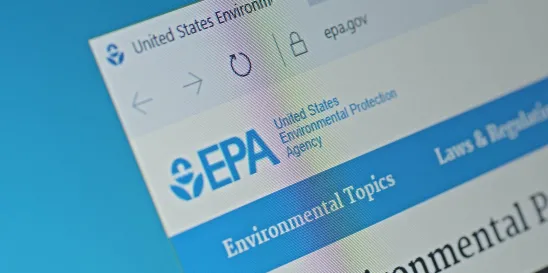On January 31, 2024, the U.S. Environmental Protection Agency (EPA) announced that it will hold a webinar on February 20, 2024, at 1:00 – 4:00 p.m. (EST) on the five chemicals currently undergoing prioritization under the Toxic Substances Control Act (TSCA). EPA states that the webinar is open to all, “but EPA is particularly interested in learning more about how these chemicals are used and how people could potentially be exposed at different points in a chemical’s lifecycle. EPA is also interested in hearing from members of communities who may be impacted by chemical exposures.” Registration is open.
In December 2023, EPA announced that it was beginning the process to prioritize five chemicals for risk evaluation under TSCA:
- Acetaldehyde is primarily used in the manufacturing and processing of adhesives, petrochemicals, and other chemicals, as well as intermediates for products like packaging and construction materials. Exposure to acetaldehyde may result in a range of health effects such as irritation of the respiratory system. It is a probable human carcinogen.
- Acrylonitrile is primarily used in the manufacturing and processing of plastic materials, paints, petrochemicals, and other chemicals. Exposure to acrylonitrile may result in a range of health effects such as irritation of the respiratory system. It is a probable human carcinogen.
- Benzenamine is used in the manufacturing and processing of dyes and pigments, petrochemicals, plastics, resins, and other chemicals. Exposure to benzenamine may result in a range of health effects such as adverse effects on the blood, fetal development, and reproduction. Benzenamine is a probable human carcinogen.
- 4,4’-Methylene bis(2-chloroaniline) (MBOCA) is used in the manufacturing and processing of rubbers, plastics, resins, and other chemicals. It is a probable human carcinogen. According to EPA, there are also extensive data that demonstrate exposure to MBOCA may damage genetic material in cells, potentially leading to other adverse health effects, particularly when exposure occurs to infants and children.
- Vinyl chloride is primarily used in the manufacturing and processing of plastic materials like polyvinyl chloride (PVC), plastic resins, and other chemicals, and EPA states that many of these materials are used for pipes, insulating materials, and consumer goods. EPA notes that vinyl chloride was also involved in the Norfolk Southern train derailment in East Palestine, Ohio. Exposure to vinyl chloride may result in a range of health effects such as liver toxicity. It is also a known human carcinogen.
If EPA designates these five chemicals as High-Priority Substances at the end of the nine- to 12-month long time frame required by law, it will begin risk evaluations for these chemicals. During the prioritization process, EPA is gathering data on the five chemicals. EPA states that the more detailed information it receives about the uses of these chemicals, potential routes of exposure, and monitoring data, the better the Agency would be able to inform any downstream analyses that could be part of a risk evaluation.
The webinar will provide an overview of the prioritization process. There will also be an opportunity for participants to share comments. If you would like to provide a comment during the webinar, please e-mail Sarah Soliman (Soliman.sarah@epa.gov) no later than February 16, 2024. EPA states that it also encourages stakeholders to provide their comments in the appropriate dockets. EPA is accepting public comments on these chemicals until March 17, 2024, at EPA-HQ-OPPT-2023-0601 at www.regulations.gov, or at the chemical-specific dockets for acetaldehyde, acrylonitrile, benzenamine, MBOCA, and vinyl chloride. More information on the prioritization process for the five chemicals is available in our December 27, 2023, memorandum.




 />i
/>i

